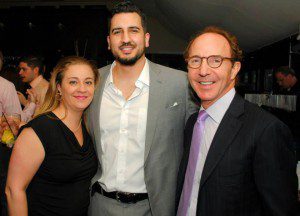As temperatures begin to rise and we transition from spring into summer, it is a fantastic time to revisit the age old wisdom of applying a broad spectrum sunscreen to your skin before enjoying fun in the sun. As discussed in last week’s blog, “Save Your Skin, Save Your Life: Some Facts about Skin Cancer†we discussed the increase in cases of melanoma nationally and recommended the use of a broad spectrum daily SPF. But why is SPF important? What does it stand for? What levels are best for protecting you from the harmful rays of the sun? In this blog we attempt to answer some of these questions and provide a helpful overview of why skin protection is so vital to our overall health and wellbeing.
 What are Sunscreens and Why Do We Wear Them?
Sunscreens are protective products that when applied to your skin will help prevent the harmful ultraviolet radiation of the sun from reaching and harming the delicate layers of your skin. The sun produces two types of radiation: UVA and UVB. Both forms of radiation lead to premature aging of the skin and can increase your risk of skin cancer. UVA rays, or long wave ultraviolet A, penetrate deep into the dermis, the skins thickest layer, and are associated with causing wrinkling, hardening and photoaging of the skin. UVB rays, or short wave ultraviolet B, penetrate the superficial layers of your skin and are often the cause of sunburns. Unprotected and prolonged exposure to both UVA and UVB rays increases one’s chances of developing skin cancer. Therefore, it is vital that we understand how to protect ourselves from these harmful carcinogenic rays. Sunscreens provide one method of achieving this protection.
 What is SPF?
SPF stands for “sun protection factorâ€. This quality is calculated based on how well a product is able to deflect UVB rays. A product’s SPF rating is arrived at through comparing the amount of time it takes for unprotected skin to burn with the amount of time needed for an individual to burn while wearing sunscreen-protection. For example, a person likely to burn within 5 minutes of sun exposure when they apply an SPF 2 would be able to be out in the sun for 10 minutes before developing sunburn. The higher the SPF, theoretically, the more protection your skin will have from the harmful UVB rays of the sun; however, this is a slightly deceptive statistic. It is helpful to look at SPF in terms of percentages: SPF 15 filters out approximately 93% of UVB rays; SPF 30 filters out about 97% of UVB rays; and SPF 50 is capable of filtering out up to 98% of UVB rays. It is important to note that regardless of what SPF you choose to use, all sunscreens should be reapplied after 2 hours for them to maintain their effectiveness.
Dr. Sullivan is a proud sponsor of the Melanoma Foundation of New England and a co-sponsor of last week’s Martinis for Melanoma event which was held at Eleven Forty Nine Restaurant in East Greenwich, RI. Below are some photos from that evenings festivities.
To contact our office and schedule a consultation click here.



